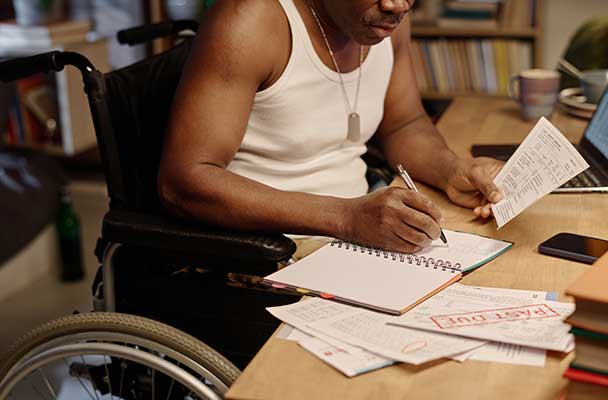
Veteran Debt Relief Options | Compare Methods
When transitioning from military to civilian life, debt can often feel like going from the frying pan into the fire. Stress builds, bills stack, and it can seem like there’s no way forward. Veterans need to know that seeking debt relief options is not a sign of weakness. You aren’t bad with money or a failure because you’re facing financial challenges; you’re just dealing with a battle you weren’t prepared for.
The challenge is knowing which programs are worth engaging with and which are too good to be true. The noise makes it hard for veterans to find the truth.
This guide is about facts. We will discuss the main debt relief options, show how they stack up, and walk through what veterans should consider before making a decision.
Veteran Debt Relief Options
Before you make a move, you need to know what’s on the table. There are many veteran debt relief options available, but not all are created equally. Some will help you steady the ship; others can sink you if you don’t understand the risks.
The chart below breaks down each option, allowing you to see its pros and cons and how it may impact your credit and benefits.
|
Method |
Pros |
Cons |
Typical Costs |
Eligibility |
Credit Score Impact |
Security Clearance Impact |
VA Benefit Impact |
|---|---|---|---|---|---|---|---|
|
Debt Consolidation |
Simplifies payments into one loan, often with a lower interest |
Requires credit check, may not reduce total debt |
Origination fees, interest |
Veterans with steady income and fair+ credit |
Neutral to positive if paid on time |
Usually safe if payments are maintained |
No direct impact |
|
Debt Settlement |
Can reduce balances owed |
Harms credit in short term; risk of lawsuits; taxable forgiveness |
15–25% of enrolled debt (fees) |
Veterans with high unsecured debt and hardship |
Negative short-term impact |
May raise concerns during clearance reviews |
No direct impact |
|
Bankruptcy (Ch. 7) |
Discharges most unsecured debt quickly |
Stays on credit for 10 years; stigma; loss of assets |
Filing & legal fees ($1,500–$3,500) |
Veterans with overwhelming debt and no repayment ability |
Major negative impact |
High risk for clearance holders |
No direct impact |
|
Bankruptcy (Ch. 13) |
Repayment plan; can protect home/car |
3–5 years of court supervision; strict budget |
Filing & legal fees ($3,000–$6,000) |
Veterans with income but too much debt to manage |
Negative but may recover after completion |
May raise clearance questions |
No direct impact |
|
Nonprofit Credit Counseling |
Free/low-cost advice; budget plans; no credit damage |
Limited ability to reduce balances |
$0–$50 setup; $25–$75 monthly |
Any veteran with debt concerns |
Neutral |
Safe |
No direct impact |
|
Debt Management Program (DMP) |
Combines payments; reduces interest rates |
Requires discipline; not all creditors participate |
Monthly fee ($25–$75) |
Veterans with $5K–$100K unsecured debt |
Short-term dip, long-term positive |
Usually safe |
No direct impact |
|
VA Hardship / Relief Grants |
Direct aid for emergencies; may cover basics (housing, utilities, medical) |
Limited availability; not long-term solution |
Free (grant-based) |
Service-connected veterans with hardship |
None |
Safe |
Varies (weeks to months) |
|
Balance Transfer / Credit Union Loans |
Low or 0% intro APR; military credit unions often supportive |
Requires good credit; short promo period |
Transfer fee (3–5%) |
Veterans with strong credit |
Neutral to positive |
Safe |
No direct impact |
|
Military-Focused Nonprofits (DAV, etc.) |
Tailored veteran support: grants, advocacy, financial literacy |
Resources vary by nonprofit |
Free |
Service members, veterans, families |
None |
Safe |
Ongoing |
Debt Consolidation
Debt consolidation is a veteran debt relief option that takes all those different bills and rolls them into one loan. You make a single payment, often at a lower interest rate, making life much easier to manage. If you’ve got steady income and at least decent credit, this option can help you get control back.
Example: A veteran with $25K in credit card debt refinances with a USAA personal loan, lowering interest from 21% to 11%. Payments become manageable, and credit improves with on-time payments.
Debt Settlement
Debt settlement is when someone negotiates with your creditors to let you pay less than what you owe. It can cut your balances and repair your credit over the long term, but your credit will take a hit early.
Example: A veteran with $45K in unsecured debt enrolls with a settlement company. After 36 months, balances are reduced to $25K, but credit is damaged but credit is lowered in the short term.
Bankruptcy (Chapter 7)
Chapter 7 wipes out most unsecured debt in just a few months. It’s usually the path when you’ve run out of options and can’t see a way to pay it back. It will sit on your credit report for up to 10 years, and it can be a problem for a clearance, but your VA benefits stay safe.
Example: A veteran with $60K in medical debt and no income files Chapter 7. Their credit is initially damaged but their debt is totally cleared in 5 months.
Bankruptcy (Chapter 13)
Chapter 13 sets up a repayment plan that runs for three to five years. It lets you keep things like your house or car while you work through your debt. It’s a grind and your credit will take a hit, but for some veterans, it’s the structure they need to get back on track.
Example: A veteran with steady income files Chapter 13, keeping his car and home but living under strict budget oversight for 5 years.
Nonprofit Credit Counseling
Nonprofit credit counseling gives you a chance to sit down with someone and get real guidance at little or no cost. You’ll learn how to budget, understand your credit, and look at your options without hurting your credit score. For many vets, it’s the smartest first step.
Example: A veteran fresh out of service uses counseling to create a budget and avoid predatory loans. No negative impact on credit and gains long-term financial discipline.
Debt Management Programs (DMPs)
A DMP is a structured plan through a counseling agency where your debts are bundled together and interest rates are lowered. You’ve got to stick with it for three to five years, but many veterans find it manageable. Your credit may initially dip, but it usually improves once you’ve shown steady payments.
Example: A veteran with $50K in unsecured debt enters a DMP, reducing interest rates from 20% to 8%. Credit dips slightly but rebounds after 4 years of consistent payments.
VA Hardship or Relief Grants
VA hardship grants are available to cover emergency expenses, including rent, utilities, and medical bills. They don’t cost you anything, but funds are limited and not always guaranteed.
If you’re facing a crisis, this is worth looking into, even though it’s not a long-term fix.
Example: A disabled veteran facing eviction applies for a VA hardship grant and gets emergency rent assistance. No credit damage, but limited scope.
Balance Transfer or Credit Union Loans
Balance transfer cards and credit union loans can buy you time with low or zero interest for a set period. Veterans with strong credit can use these to pay down debt faster and save money. The catch is making sure the balance is handled before the higher rates kick back in.
Example: A veteran with excellent credit transfers $10K onto a Navy Federal card with 0% APR for 18 months. Saves thousands if paid off before the promo ends.
Military-Focused Nonprofits
Organizations like DAV, VFW, and the Navy SEAL Foundation provide grants, financial education, and other direct help. They understand what veterans face because supporting vets is their mission. These groups are a safe place to start if you need backup.
Example: DAV helps a veteran appeal for benefits while providing financial coaching and stabilizing household finances in the process.
Considerations Before Choosing
Not all veteran debt relief options work the same way. Before you decide, square up on how each choice aligns with your situation:
- VA Benefits: Debt relief methods do not affect VA disability, pensions, or GI Bill benefits. Be wary of companies that claim otherwise.
- Credit Scores: Bankruptcy and settlement hit hardest; consolidation, DMPs, and counseling are less damaging or even positive over time.
- Military Transitions: PCS moves, medical bills, and deployments add unique stress. Flexible programs or VA-based assistance can help bridge these gaps.
Remember, the right plan is about protecting your clearance, benefits, and future stability just as much as it is about lowering your debt.
Red Flags to Watch Out For
Bad actors prey on veterans by twisting trust and patriotism into sales tactics. Here are the clearest signs you’re looking at something suspicious:
- Instant forgiveness claims: No legitimate program offers this.
- Patriotic branding: Red, white, and blue does not equal trustworthy.
- “Government-approved” language: Most private programs are not backed by the VA or DoD.
- AI-generated testimonials: Staged or deepfake “success stories.”
- Fake Credentials: Check whether counselors or companies are accredited. If you can’t verify it, don’t trust it.
- Short-term, high-cost loans: Payday lenders and predatory installment loan companies target veterans. They trap you with sky-high interest and fees that only make debt worse.
Rule of thumb: If it sounds too good to be true, it probably is.
FAQ
|
Question |
Answer |
|---|---|
|
Does debt relief affect my VA disability pay or pension? |
No. Creditors cannot take your VA disability, pension, or GI Bill. If someone tells you different, they are lying. |
|
Can I lose my home if I join a debt management program? |
No. A DMP is not a court process. Your house is only at risk if you stop paying and your lender takes action. |
|
How long before my credit starts to recover after debt settlement or bankruptcy? |
Bankruptcy stays on your record up to 10 years, and a settlement can hurt your credit for a few. Still, veterans who pay steadily after typically see noteworthy improvement in a year or two after. |
|
Do balance transfer cards or credit union loans hurt my clearance? |
Not if you handle it right. Using these tools responsibly shows stability. The risk is running them up again or missing payments. |
|
Are there debt relief programs just for veterans? |
Yes. Nonprofits like DAV, VFW, and the Navy SEAL Foundation provide grants and support. Military credit unions also have veteran-focused loan options. |
|
What happens if I can’t finish a debt management program? |
If you drop out, the lower interest rates go away and creditors reset you to full rates. Only sign up if you know you can stick with it. |
|
Can medical debt from service affect my benefits? |
No. Medical debt does not take away your VA benefits. But it can wreck your credit and make housing or loans harder, which is why programs like grants or DMPs matter. |





